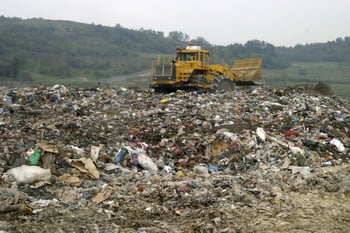 Eliminating waste is at the heart of the Lean business management philosophy. So much so, that there are eight defined types of waste.
Eliminating waste is at the heart of the Lean business management philosophy. So much so, that there are eight defined types of waste.
Even if you are not an organization devoted to the Lean approach, it still pays to understand and be on the lookout for waste that can hurt the bottom line, slow production times, hurt customer satisfaction, and demotivate employees.
We can’t list every example of each type of waste, but perhaps considering a few will lead you to think about where you might find and eliminate waste in your organization.
Defects (AKA, Mistakes)
Defects are probably the easiest type of waste to spot because your customers or downstream process owners will likely let you know. Examples include:
- Incorrect diagnosis in a hospital that leads to unnecessary treatment or tests
- Work on a construction project that doesn’t pass inspection
- Software code with errors that need to be corrected
- Products that are shipped to the wrong customer
- Manufactured items that don’t meet the spec
Waiting
There are a couple of ways that the waste of waiting impacts organizations. In the first case, people or processes must wait because the path forward isn’t cleared for them to proceed. This might happen if you are waiting to start your meeting because the last meeting is still in the conference room. In the second case, people or processes are waiting for input from a prior step. For example, the doctor is ready to see the patient, but the medical assistant hasn’t finished getting the vitals and verifying medication. Other examples are:
- Framers waiting for lumber to be delivered
- Surgeons waiting for an OR to become available
- Airplanes waiting to be refueled
- Factory workers waiting for a shipment of parts
Transportation
There is obviously a need for some transportation of people and goods, so not all transportation is a waste, but a surprising amount of it is. The waste of transportation is often the direct result of one of the other wastes such as over production or inventory. Here’s what it looks like:
- Shipping unsold items from the store back to the distribution center
- Purchasing parts from a far away supplier when a local option would do
- Moving equipment from one department to another
- Sending items that need to be distributed to field workers to the office first
Motion
Motion is very much like transportation, but it involves unnecessary activities done by people. For example, if the server makes two trips to the table to bring out the order, when he could have done it in one, that’s the waste of motion. Here are a few other examples:
- People going from place to place looking for missing supplies or equipment
- Workers moving one box at a time rather than using a hand truck to do many at once
- Storing medical supplies centrally, rather than in the exam room
- Office equipment that is not conveniently located
Overproduction
Overproduction happens when an organization creates a product before there is demand. Modern businesses have gone to great lengths to implement just-in-time manufacturing because overproduction is expensive and it balloons into other wastes like inventory and transportation. Here’s what it looks like:
- Warehouses filled with products that don’t sell
- Jam packed clearance racks
- Hotels with empty rooms
- Grocery items that pass their “sell by” dates
Inventory
The wastes of inventory and overproduction are two sides of the same coin. If a something is over produced, it ends up somewhere, requiring tracking and management, taking up space, and potentially even driving down product prices. It’s easy to envision a warehouse full of dusty items on shelves. Here are a few more ways to spot the waste of inventory:
- Stacks of date sensitive forms or documents that are past their date
- Fleet vehicles that are seldom used
- Storage of parts that are no longer needed
- Exam rooms with supplies that are seldom used
Over Processing
Over processing occurs when organizations or people make a product, task, or process more complex than necessary to deliver value to the customer. For example, products or software applications that have features customers rarely use. It might also take the form of:
- Unnecessary medical tests or procedures
- Multiple levels of management approvals
- More customization options than the customer wants or needs
- Redundant business systems
Human Potential
For a long time, discussion centered around only the prior seven wastes of Lean, but more recently, the waste of human potential has joined their ranks and with good reason. It is probably the most common and most damaging type of waste that organizations encounter. You see it when:
- Employees spend time on tasks that do not add value
- Career development and planning is absent
- People with advanced skills do routine work
- Employee ideas for improvement are ignored
Once you understand the eight wastes of Lean, you will likely see example all around you. This isn’t a bad thing. Each waste you see is an opportunity for improvement that can be addressed to improve all sorts of performance measures.



Add a Comment